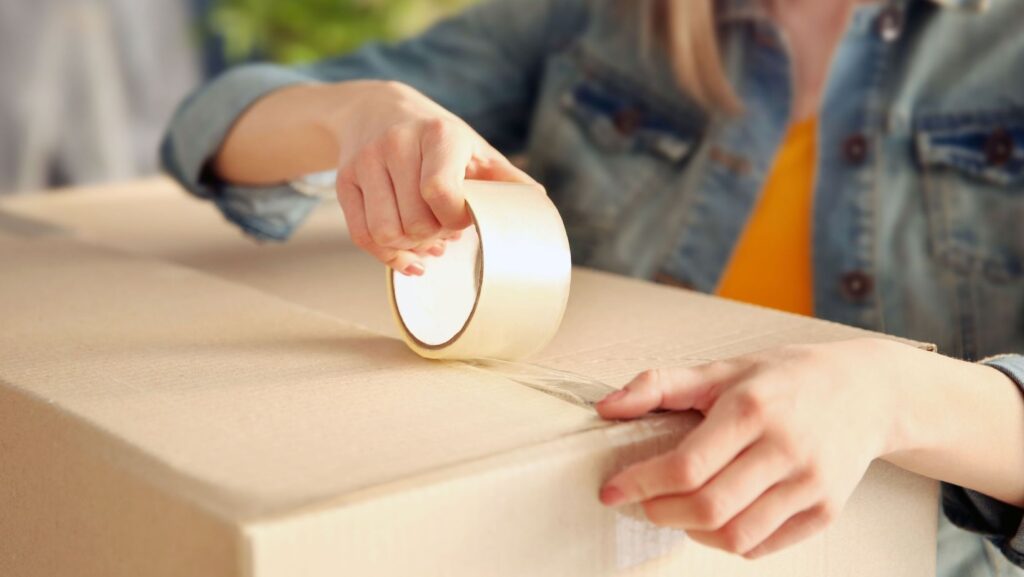Shipping packages securely requires more than sturdy boxes and careful handling—it also depends on using the right carton sealing tape. Two common options are water-resistant carton sealing tape and regular tape. Each has distinct advantages, drawbacks, and use cases. In this article, we’ll dive deeper into the features of these tapes to help you decide which is the better choice for your shipping needs.
What is Water-Resistant Carton Sealing Tape?
Water-resistant carton sealing tape is specially engineered to protect packages from moisture and humidity. Its adhesive remains effective in challenging environments, ensuring a tight seal even when exposed to water, cold temperatures, or high humidity.
Key Features
- Durable Backing Material: Often made from materials like polyester or polypropylene with waterproof coatings.
- Strong Adhesive: Resistant to degradation in wet or extreme conditions.
- Tear-Resistant Design: Reinforced to withstand rough handling.
Advantages of Water-Resistant Tape
- Weatherproofing: Ideal for outdoor storage or shipping in rainy or snowy conditions.
- Cold Storage Compatibility: Maintains adhesion in freezing environments, making it suitable for perishable goods.
- Reduced Risk of Damage: Prevents water ingress that could weaken cardboard boxes or damage contents.
- Professional Presentation: Its clean, durable finish adds an extra layer of protection and professionalism.
Drawbacks
- Higher Cost: Premium features come at a higher price.
- Limited Need for Certain Applications: Overkill for dry, controlled environments.
What is Regular Tape?
Regular tape is a versatile and economical option, commonly used for sealing packages in dry, low-risk environments. Standard tapes include acrylic and hot-melt adhesive types.
Key Features
- Basic Adhesive Strength: Adequate for light to medium-duty applications.
- Variety of Sizes: Comes in various widths and lengths for different box sizes.
- Ease of Use: Simple application with standard tape dispensers.
Advantages of Regular Tape
- Cost-Effectiveness: Ideal for budget-conscious operations.
- Easy Accessibility: Widely available in stores and online.
- Good for Lightweight Packaging: Performs well for smaller or less heavy packages.
Drawbacks
- Vulnerability to Moisture: Loses adhesion when exposed to water or humidity.

- Limited Durability: May tear or degrade during long-distance transportation or under heavy loads.
In-Depth Comparison: Water-Resistant vs. Regular Tape
| Feature | Water-Resistant Tape | Regular Tape |
| Water Resistance | High; protects against rain, humidity, and spills | Low; weakens when exposed to water |
| Adhesive Longevity | Strong, even under extreme conditions | Moderate; may lose grip over time |
| Durability | Tear-resistant; withstands rough handling | More likely to tear or lose effectiveness |
| Environmental Range | Performs in cold, hot, or damp environments | Suitable for dry, temperature-controlled areas |
| Best Use Cases | Long-distance shipping, refrigerated goods, outdoor storage | Local shipments, dry storage |
| Cost | Higher due to advanced properties | Lower, affordable for general use |
Finest Scenarios for Water-Resistant Tape
-
Long-Distance or International Shipping
Packages traveling long distances are more likely to face adverse weather or handling conditions. Water-resistant tape ensures these challenges don’t compromise the seal.
-
Shipping Liquid or Fragile Items
Liquid containers or fragile items benefit from extra protection against environmental factors. Water-resistant tape minimizes risks.
-
Cold Storage Applications
For food, pharmaceuticals, or other temperature-sensitive products, water-resistant tape maintains its adhesive properties in cold or freezing conditions.
-
High-Value Goods
High-value shipments demand maximum security. The durability of water-resistant tape prevents tampering and provides peace of mind.
Finest Scenarios for Regular Tape
-
Local or Short-Distance Shipping
For short transit times in controlled environments, regular tape is often sufficient.
-
Non-Perishable Goods
Items not sensitive to temperature or moisture can safely be shipped with regular tape.
-
Budget Constraints
Regular tape is the go-to for businesses looking to minimize costs while maintaining efficiency.
Additional Considerations
Eco-Friendly Options
Some water-resistant tapes are made with biodegradable materials, offering sustainability for businesses prioritizing eco-friendly practices.

Regular tape often lacks such options but is available in recyclable variants.
Custom Branding
Both types of tape can be customized with logos or messaging, but water-resistant tape tends to offer a higher-quality print due to its durable backing.
Performance Testing
Before committing to a type of tape, test it under your specific shipping conditions. Simulate moisture, rough handling, or cold storage to see how the tape performs.
Conclusion
The choice between water-resistant carton sealing tape and regular tape depends on your shipping needs. If you’re transporting goods in wet, humid, or extreme conditions, investing in water-resistant tape ensures secure delivery and prevents costly damage. For low-risk, budget-conscious shipping in dry environments, regular tape remains a reliable choice.
By evaluating your shipping requirements and balancing cost, durability, and protection, you can select the right tape to enhance the safety and efficiency of your packaging process.
